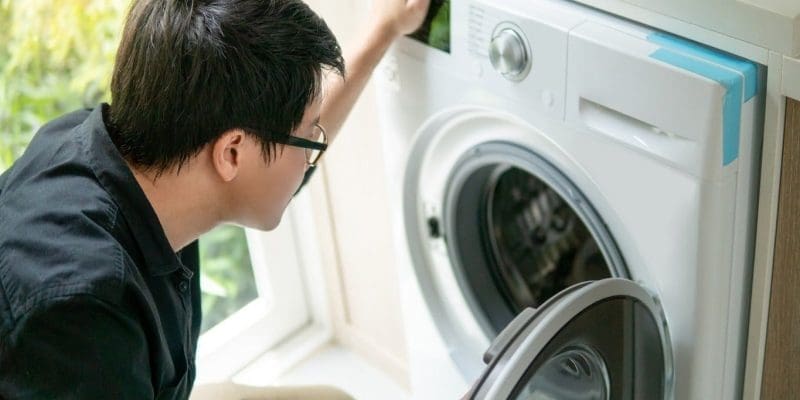
Appliance Repair – Common Appliance Problems
Household appliances are an integral part of our modern lives. From preserving our food to washing our clothes, these machines make day-to-day tasks considerably more convenient. However, just like any other piece of machinery, appliances aren’t immune to hiccups. Understanding these common problems not only saves us time on appliance repair but can also prevent minor issues from turning into costly repairs.
The Anatomy of Household Appliances
Most appliances, regardless of their specific functions, consist of a few general components: a power source (usually electric), control mechanisms like buttons or dials, and functional parts like motors or heating elements. Being familiar with these basics can be helpful when diagnosing problems.
Common Problems & Solutions for Major Appliances
Refrigerators and Freezers
- Not cooling adequately: The most common cause is a blocked air vent or a malfunctioning thermostat. Ensure vents aren’t obstructed by food containers, and check the thermostat settings. If these aren’t the issues, the compressor or refrigerant might be at fault, requiring professional assistance.
- Water leakage: Often, refrigerators start leaking water due to a clogged defrost drain or a frozen water supply line. Regularly check and clean the defrost drain, and if the water line is frozen, you may need to replace it.
- Strange noises: Banging or humming sounds might indicate an overworking compressor while clicking sounds can be from the start relay. If the noise is persistent, it’s wise to call in a technician.
Washing Machines
- Fails to start or spin: This could be due to a tripped circuit breaker, a faulty door latch, or a worn-out drive belt. Check your power source first, then the latch, and finally, inspect the belt.
- Water not draining: A common culprit is a clogged drain hose or a jammed coin trap. Regularly clean out the drain hose and check the coin trap for any obstructions.
- Excessive noise or vibrations: Overloading the machine or an imbalanced load can cause this. Ensure that you’re not overloading and redistribute clothes inside if they’re clumped to one side.
Dryers
- Not heating or taking too long: A clogged lint screen, a malfunctioning heating element, or a tripped circuit breaker might be the cause. Regularly clean the lint screen and check your circuit breaker. If the issue persists, inspect the heating element.
- Drum doesn’t spin: This can be due to a broken belt or a faulty motor. Check the belt for signs of wear and tear and replace if necessary. If the motor is the issue, seek professional help.
- Makes noise: Unusual or increased dryer noise can be due to several reasons. Worn-out drum rollers, a malfunctioning drive belt, or damaged bearings can cause squeaking or thumping sounds.
Ovens and Stoves
- Oven not heating: A broken igniter or a malfunctioning thermostat might be the culprits. Check the igniter for any visible damages and ensure the thermostat is set correctly.
- Burners not lighting up: Clogged burner ports or issues with the igniter can cause this. Clean the burner ports with a pin and inspect the igniter for wear and tear.
- Inconsistent temperatures: A malfunctioning thermostat or temperature sensor might be at fault. Ensure they’re set correctly, and if the issue persists, consider replacing them.
Dishwashers
- Not draining: A clogged drain or a faulty drain pump can cause this. Regularly clean the drain and, if the problem persists, inspect the pump.
- Dishes still dirty after cycle: This might be due to low water pressure, a clogged spray arm, or using the wrong detergent. Check your water source, clean the spray arm, and ensure you’re using dishwasher-specific soap.
- Leaks or overflowing: Worn-out seals or a malfunctioning float switch might be the culprits. Replace any visibly worn-out seals and check the float switch for malfunctions.
Tips for Maintaining Your Appliances
Routine maintenance is key to extending the life of your appliances. Always consult and follow the user manual’s guidelines. Regular cleaning, especially of vents, drains, and filters, can prevent many of the issues mentioned above. While DIY fixes can solve minor problems, don’t hesitate to call in professionals for complex issues, ensuring your appliance’s longevity and safety.
Conclusion
Our household appliances serve us daily, making understanding their common issues a valuable skill. By diagnosing minor problems early and performing routine maintenance, we can save money and keep our homes running smoothly.
Additional Resources
- Online Tutorials: Websites like YouTube offer countless DIY repair guides.
- Recommended Appliance Repair Kits: Check online marketplaces for top-rated kits.
- Helplines: Most major appliance brands provide customer service lines for troubleshooting help.
Understanding and maintaining your household appliances can be simple with a bit of knowledge and proactive care. When in doubt, always seek expert advice.
